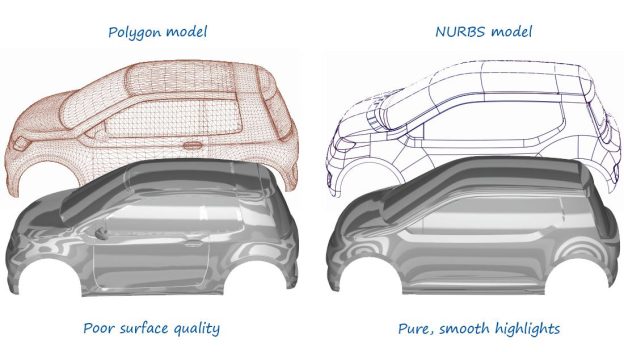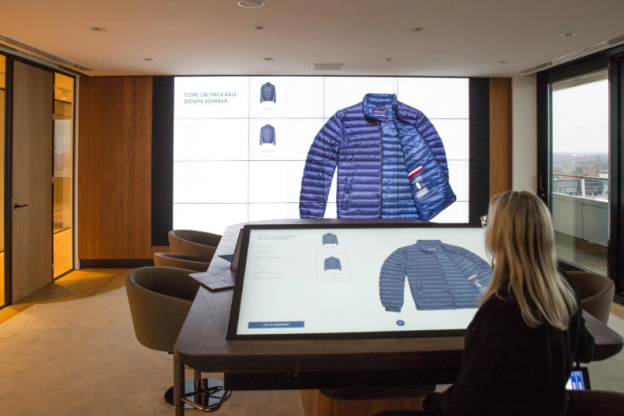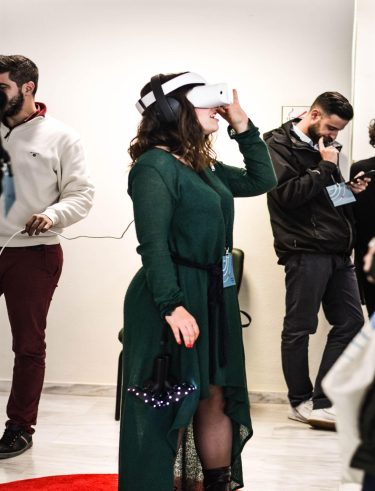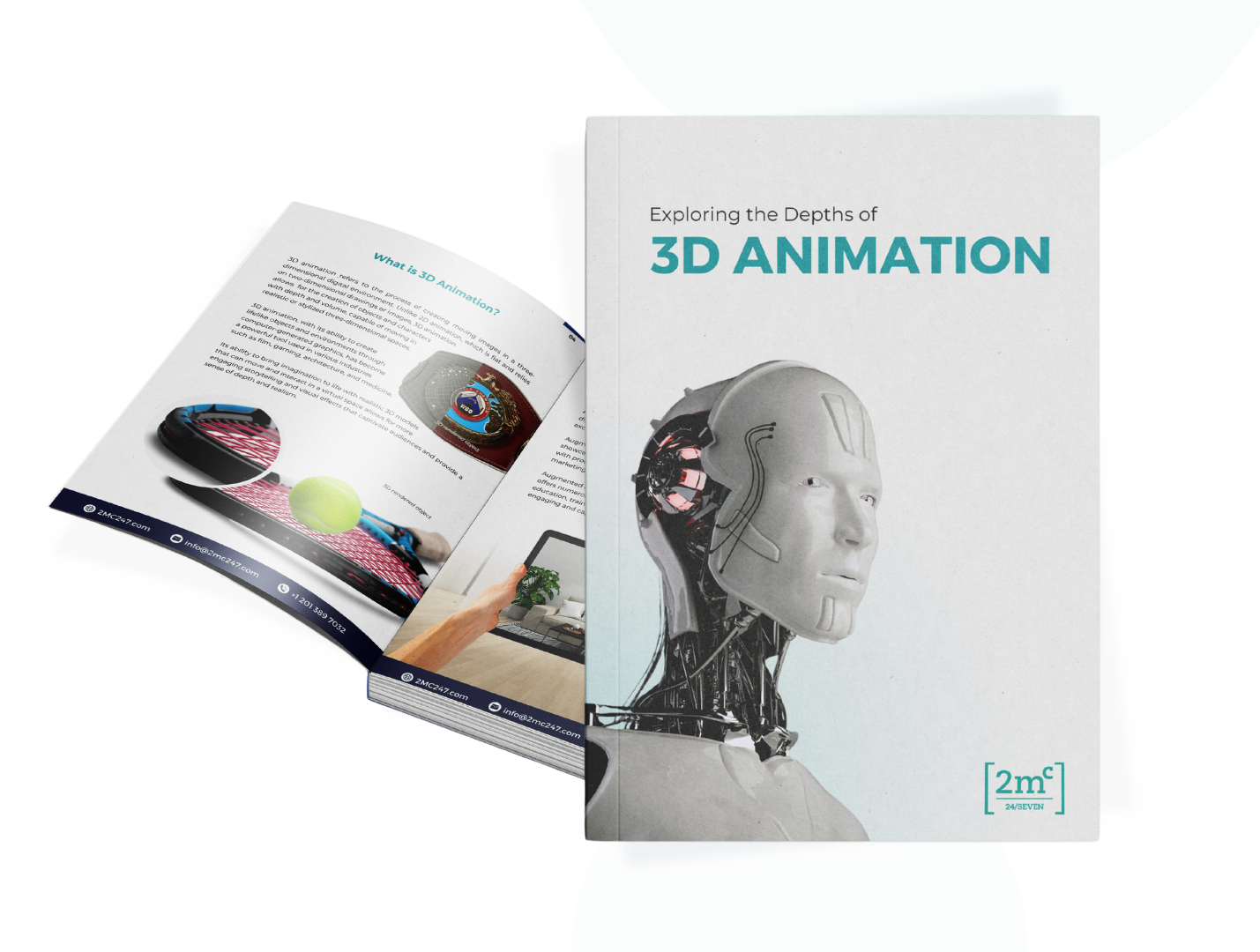Video scripts play a crucial role in captivating audiences and supercharging your brand. In today’s fast-paced digital world, where attention spans are shorter than ever, it is essential to have compelling and engaging video content that resonates with your target audience.
This ultimate guide will provide you with the necessary tools and strategies on how to write video scripts that not only captivate but also leave a lasting impression on your viewers.
By following the steps outlined in this guide, you will be equipped with the knowledge and skills on how to write video scripts that align with your brand’s goals and resonate with your target audience.
What is a Video Script?
A video script is a detailed plan that maps out the exact order of what people see and hear in a video. It helps actors, cameras, and dialogue work together smoothly to engage the audience. It is an essential tool in the video production process, ensuring that all aspects of the video align with the desired brand identity and messaging.
A well-crafted video script not only conveys information but also enhances brand equity by creating a memorable and impactful experience for the audience.
By carefully constructing a video script, brands can empower their message to resonate with their target audience. Through strategic storytelling techniques and compelling dialogue, a video script has the power to enhance brand messaging and evoke emotions in viewers.
Whether it is through humor, suspense, or inspiration, a well-written script can engage viewers on a deep level and leave a lasting impression on their minds.
Why Video Scripts Are Essential
Video scripts are essential for several reasons.
Plans Your Messaging
Firstly, they help to plan your messaging in a structured and organized way, ensuring that your video effectively communicates your intended message.
To effectively plan your messaging, it is essential to carefully strategize and outline the key ideas and concepts that will captivate your audience in your video script. By doing so, you ensure that your message is clear, concise, and engaging, leaving a lasting impression on your viewers.
Here are four steps to help you plan your messaging effectively:
- Define Your Objectives: Start by determining the main purpose of your video script. What do you want to achieve with this video? Is it to educate, entertain, or persuade? Clearly define your objectives so that every aspect of your script aligns with these goals.
- Identify Your Target Audience: Understanding who you are speaking to is crucial for effective messaging. Conduct thorough research to identify the demographics, interests, and preferences of your target audience. This knowledge will enable you to tailor your message specifically to their needs and desires.
- Craft a Compelling Storyline: Every captivating video script tells a story. Develop a storyline that hooks your audience from the beginning and keeps them engaged throughout the entire video. Use storytelling techniques such as conflict resolution or emotional appeal to create an emotional connection with your viewers.
- Outline Key Messages: Once you have defined your objectives, identified your target audience, and crafted a compelling storyline, it’s time to outline the key messages of your video script. These messages should be concise yet impactful, conveying the most important information in a memorable way.
By following these steps when planning your messaging for a video script, you can ensure that every word resonates with and captivates your audience while effectively conveying the desired message.
Efficient Communication
Next, video scripts help you communicate efficiently, which is important for getting your message across to your audience in the right way. Effective communication with scripts is crucial for grabbing and holding your audience’s attention as they watch your video.
A well-written video script not only grabs the viewer’s attention but also guides them through a structured narrative that resonates with their interests and needs.
To achieve efficient communication in video script writing, it is important to consider the audience engagement aspect. Understanding your target audience allows you to tailor your message and script structure in a way that appeals to their preferences and desires.
By incorporating elements such as storytelling techniques, humor, or emotional appeals, you can create a compelling narrative that captivates your viewers from start to finish. Additionally, using concise language and avoiding unnecessary jargon or complex terminology ensures that your message is easily understood by all viewers.
Audience Engagement
Audience engagement is like a delicate dance between a speaker and their listeners, where the speaker must gracefully lead and captivate the audience’s attention to ensure a successful performance.
For video scripts, audience engagement becomes even more crucial as it determines whether viewers will stay engaged with the content or move on. Captivating an audience through video storytelling requires careful planning and execution.
To achieve audience engagement in video scripts, it is essential to understand what captivates viewers and keeps them hooked. One effective strategy is to create a strong opening that grabs attention right from the start. This can be achieved by posing thought-provoking questions, sharing intriguing statistics, or presenting captivating visuals. Additionally, incorporating storytelling techniques such as building suspense or creating relatable characters can further enhance audience engagement.
Ultimately, mastering audience engagement in video scripts requires constant experimentation and refinement, so be patient and take your time to understand what works.
Helps Estimate and Manage Video Length
Having a script helps estimate and manage the length of your video, ensuring that it is concise and impactful.
By having a clear understanding of how long the video will be, scriptwriters can tailor their scripts to fit within that time frame, ensuring that every second counts. With the right video script template and scriptwriting techniques, creators can optimize their video content to captivate their audience from start to finish.
One important consideration when estimating and managing video length is the attention span of viewers.
Studies have shown that people’s attention spans are getting shorter, with research suggesting that the average attention span is now around 8 seconds; less than that of a goldfish! This means that creators need to make sure their videos are concise and engaging enough to hold viewers’ interest throughout.
By planning ahead and structuring the content effectively, scriptwriters can ensure that they deliver key information in a way that keeps viewers engaged without overwhelming them.
Additionally, estimating and managing video length also helps creators maintain consistency across their content. It ensures that each video follows a similar structure and pacing, which not only helps establish brand identity but also provides a cohesive viewing experience for the audience. Viewers appreciate consistency as it gives them a sense of familiarity and reliability.
How to Write Video Scripts
To effectively craft a video script, it is crucial to incorporate a well-structured narrative that keeps viewers engaged throughout the entire duration of the video, despite potential distractions or competing content online.
We’ll discuss the ultimate steps you should take to create scripts that grab your audience’s attention, keep them engaged and deliver your message effectively.
Step 1: Identify Your Target Audience and Define Your Goal
Identifying your target audience and defining your goal is an essential first step in learning how to write video scripts that resonate with your viewers and effectively communicate your desired message.
When creating a video, it is crucial to understand who your target audience is so that you can tailor the script to their needs, interests, and preferences. By identifying your target audience, you can ensure that the content of your video aligns with their demographics, psychographics, and behaviors.
Defining your goal is equally important as it provides clarity on what you want to achieve with your video. Whether it is to educate, entertain, inspire, or persuade, having a clear objective allows you to structure your script in a way that supports this goal. Additionally, defining your goal helps you determine the tone and style of the script.
For example, if your goal is to educate viewers about a complex topic, the script may need to be more informative and straightforward. On the other hand, if your goal is to entertain and engage viewers for brand awareness purposes, a more light-hearted and creative approach may be appropriate.
By understanding both your target audience and desired goals for the video script, you can ensure that every aspect of the script works together harmoniously to captivate viewers’ attention and deliver an impactful message.
This initial step sets the foundation for creating compelling videos that resonate with audiences while effectively conveying key messages aligned with specific objectives.
Step 2: Choose the Right Type of Video for Your Message
In order to effectively communicate your message, it is crucial to choose the right type of video that aligns with your goals.
Marketing videos: A marketing video aims to promote a specific product or service by highlighting its features and benefits in a compelling way. It often uses persuasive techniques like storytelling or emotional appeal to create a connection with the viewers and encourage them to take action.
Explainer videos: An explainer video, on the other hand, focuses on simplifying complex concepts or processes into easily understandable content. This type of video is particularly useful when introducing new products or services that require explanation or clarification.
How-to videos: are instructional in nature and provide step-by-step guidance on how to perform a particular task or solve a problem. They can be highly engaging as they enable viewers to learn something new while also showcasing your expertise in the industry.
Training videos: These are similar to how-to videos but are specifically designed for internal purposes within organizations. They help train employees on various topics ranging from sales techniques to company policies.
YouTube videos: YouTube has become a powerful platform for businesses to showcase their offerings through creative and engaging content. Videos uploaded on this platform can range from product reviews to behind-the-scenes footage, providing an opportunity for businesses to connect with their audience in an authentic way.
Interview videos: Lastly, interview videos feature conversations with industry experts or influential figures that add credibility and value to your brand.
Each type of video serves its purpose in capturing the attention of your target audience effectively. By understanding the characteristics of these different types of videos, you can tailor your script accordingly for maximum impact and engagement.
Step 3: Choose Your Visual Presentation Style
In the process of creating a video, one crucial step is choosing the visual presentation style that best suits your message.
Animation Videos
Animation, when used effectively in video scripts, has the power to captivate audiences and enhance brand messaging with its visually engaging and dynamic elements. Incorporating animation into an explainer video script or any other type of video production can significantly elevate the overall impact of the content.
One key advantage of using animation, particularly 3D animation, is its ability to simplify complex ideas or concepts, making them easier for the audience to understand. By utilizing animated visuals, a video script can break down intricate information into digestible and visually appealing segments, ensuring that viewers stay engaged and retain the message being conveyed.
Additionally, animation allows for creative storytelling techniques that are not limited by real-world constraints. This flexibility enables marketers to create imaginative scenarios, characters, and settings that stimulate curiosity and capture attention.
Adding animation to video scripts is a strong way to grab attention and communicate messages well. Whether it’s an explainer video or any other type of video, using animation can help businesses stand out and make a lasting impact on viewers who crave innovative content.
Motion Graphics
Motion graphics, as a visual storytelling tool, allows for the seamless integration of text, graphics, and animation in video scripts, creating an immersive and dynamic viewing experience.
In the realm of video content creation, motion graphics have become increasingly popular because they can explain complicated ideas quickly and in an interesting way. Whether it’s a marketing, explainer or even how-to-video motion graphics can elevate the overall quality and effectiveness of these videos.
One of the key advantages of motion graphics is their versatility. They offer endless possibilities for creativity by combining various elements such as typography, icons, illustrations, and animated characters. This flexibility allows marketers and content creators to tailor their visuals to suit their brand identity and target audience.
Additionally, motion graphics can effectively capture viewers’ attention through visually appealing transitions and movements. By incorporating smooth animations and eye-catching effects into video scripts, marketers can create captivating visuals that keep viewers engaged from start to finish.
Overall, motion graphics serve as an innovative tool that enhances the impact of video marketing strategies by delivering information in a visually compelling way.
Talking heads
Through the use of talking heads, video scripts can harness the power of human connection and storytelling to engage viewers on a deeper level. Talking heads refer to videos where an individual speaks directly to the camera, sharing information or opinions with the audience.
This technique has become increasingly popular in YouTube videos and how-to videos as it allows for a more personal and intimate connection between the viewer and the speaker.
Here are some reasons you should consider talking heads when you write video scripts:
- Authenticity: One of the key advantages of using talking heads in video scripts is that it creates an authentic experience for the viewers. Seeing a real person speaking directly to them can make the content feel more genuine and trustworthy. This authenticity helps to establish credibility and build a stronger connection with the audience.
- Storytelling: Another benefit of incorporating talking heads in video scripts is its ability to facilitate storytelling. By having someone speak directly to the camera, it becomes easier to convey narratives, share personal experiences, or present information in a more engaging manner. Storytelling is known to capture attention and evoke emotions, making it an effective tool for keeping viewers hooked throughout the video.
- Visual Engagement: In addition to conveying information through spoken words, talking heads also provide visual engagement for viewers. Humans are naturally drawn towards faces and expressions, making this format highly captivating. By including facial expressions, gestures, or other non-verbal cues, talking heads can enhance communication effectiveness by adding another layer of visual stimulation.
B-roll
B-roll footage, a term commonly used in filmmaking and video production, refers to supplemental or secondary footage that is used alongside the main footage to enhance visual storytelling.
It provides additional context, variety, and depth to the video by showcasing different angles, perspectives, or details of the subject matter. B-roll footage is typically shot separately from the main footage and can include shots of the environment, people’s reactions, close-ups of objects or actions, or any other relevant visuals that help convey a message.
The use of B-roll in video scripts is crucial as it adds visual interest and keeps the audience engaged. By incorporating B-roll strategically throughout a video, filmmakers can create a more dynamic and visually appealing narrative.
B-roll also allows for seamless transitions between scenes or ideas and helps avoid monotony by breaking up long stretches of talking heads or continuous shots.
Furthermore, it can provide valuable information or evoke emotions that cannot be adequately conveyed through dialogue alone. Therefore, integrating well-shot and thoughtfully selected B-roll into video scripts is essential for captivating audiences and enhancing their overall viewing experience.
Screen Recordings
Screen recordings are like a window into the computer world. They show and explain things happening on a screen, which makes it easy to understand and learn. These recordings are popular because they can show complicated stuff in a simple and interesting way.
By recording the screen activity, users can demonstrate step-by-step processes, showcase software features, or provide tutorials on various topics.
One of the key advantages of screen recordings is the ability to enhance learning and comprehension. They’re especially great for online learning and remote work. Teachers and trainers can use them to show how to do things step by step, which makes it easier to understand and learn.
Plus, you can pause, rewind, or watch screen recordings again whenever you want. This lets people learn at their own speed. This flexibility not only caters to diverse learning styles but also ensures that information is easily digestible and retained.
Step 4: Write, Re-write, and Re-write Again
For the best audience engagement, keep improving your video script through multiple rewrites to make it really captivating. Writing a great video script takes careful work and attention to detail. The first version is a starting point, but the real potential comes out in later rewrites.
When you’re rewriting, think about a few things that keep the audience interested. First, make sure it’s clear. Complicated ideas should be simple and short so viewers don’t get confused or bored.
Also, think about the speed of the script. By using different sentence lengths, pauses, and smooth transitions between parts of the script, you can make it flow better. Plus, revising lets you make the words and tone strong to convince viewers. Use words that your audience likes and expects. This shows you know what you’re talking about. Adding creativity with imagery or storytelling can also make it more interesting.
Keep improving and rewriting to make a video script that grabs the audience. This way, you can make it clear, keep a good pace, and use strong language to connect with viewers. When you use new writing ideas and keep the information clear, your brand’s message can really connect with the people you want to reach.
Step 5: Structure Your Video Script: Hook, Body, Conclusion
A captivating video script can greatly enhance your marketing strategy and help you convey your message in a memorable way. Here are some key elements that show you how to write video scripts effectively:
Start with a strong hook
The hook serves as the opening of the video script and plays a vital role in capturing the audience’s attention from the very beginning. It should be compelling, intriguing, or surprising to create an immediate connection with viewers.
Grab the viewer’s attention from the beginning by starting with an intriguing question, a surprising statistic, or a relatable story. When you utilize any of these elements in your script you entice your viewers to continue watching.
Develop a clear and concise message in your body
Following the hook comes the body of the video script which contains the main content and message that you want to convey. This section should be well-structured and organized to maintain audience interest and comprehension. It is essential to break down complex ideas into easily digestible segments while maintaining a logical flow.
Determine the main purpose of your video and ensure that every sentence contributes to conveying that message effectively. Utilizing storytelling techniques can also enhance engagement by creating an emotional connection with viewers. Incorporating visuals, statistics, examples or anecdotes can further support your message and make it more persuasive.
Conclude on a strong note
Concluding your video script effectively is crucial for leaving a lasting impact on your audience. The conclusion should summarize key points discussed in the body while reinforcing your main message or call-to-action.
It is important to end on a strong note that leaves viewers feeling satisfied and motivated to take action or further explore your brand or product.
By following this structured approach when writing video scripts — captivating through a compelling hook, engaging through a well-structured body, and leaving a lasting impact through an effective conclusion — you can ensure that your videos captivate audiences and achieve their intended goals, whether it is to inform, persuade, or entertain.
Step 6: Polishing, and Finalizing Your Script
Revise and Edit for Clarity and Impact
Revising and editing video scripts is essential for enhancing clarity and impact, allowing brands to effectively captivate their audience. By revising the script, your brand can ensure that its message is clear and concise, eliminating any ambiguity or confusion that may arise.
This involves reviewing the language used, checking for grammar and spelling errors, and refining the structure of the script to improve its flow.
Editing is all about making the script have a big impact. This means getting rid of things that don’t matter and saying things in a convincing way. Editing makes your script more powerful, aiming to get viewers interested. Picking words that make people feel something or want to know more will help your brand get more attention.
Revising video scripts are really important for making content that people care about. By writing in a way that’s both informative and interesting, you can make your messages super effective and interesting.
Read Aloud: Making Sure It Sounds Good
Enhancing the auditory appeal of video scripts is crucial for captivating audiences, as studies have shown that 65% of people are more likely to remember information when it is presented in an engaging and compelling manner.
When a script is read aloud, it allows the writer to identify any areas that may be confusing or unclear. This process helps in refining the script and ensuring that it flows smoothly, making it easier for viewers to comprehend and follow along.
Reading a video script aloud also enables the writer to gauge its overall tonality and pacing. The rhythm and cadence of the spoken words can greatly impact how the audience perceives the message being conveyed.
By listening to your own voice reading the script, you can detect if certain sentences feel too long or if there are any awkward pauses that disrupt the flow. Making adjustments based on these observations will contribute to creating an audio experience that keeps viewers engaged from start to finish.
Step 7: Infuse Your Brand Voice for Authenticity
To achieve authenticity in video scripts, it is essential to infuse the brand voice, allowing it to resonate with the target audience and establish a strong connection.
One way to infuse your brand voice into video scripts is by using language that reflects the values and personality of your brand. For example, if your brand is known for being playful and humorous, incorporating witty remarks or lighthearted banter can help convey this personality in the script. Additionally, consider the tone of your brand voice. Is it formal or casual? Professional or conversational? Adapting the tone of the script to align with your brand’s voice will further enhance its authenticity.
Another strategy for infusing authenticity into video scripts is through storytelling. Storytelling engages emotions and makes your message more memorable. By including stories that match your brand’s values or highlight real-life experiences with your product, you build an emotional link between viewers and your brand. This builds trust and loyalty, resulting in higher engagement and conversions.
You may also consider including testimonials from satisfied customers in your video scripts. Testimonials provide social proof, demonstrating that others have had positive experiences with your brand. This not only builds credibility but also adds a human element to the script, making it more relatable for viewers.
In conclusion, infusing your brand voice into video scripts is crucial for establishing authenticity in order to captivate audiences effectively. By using language that reflects the values of the brand, incorporating storytelling techniques, and including testimonials from satisfied customers, you can create a compelling script that resonates with viewers on both intellectual and emotional levels.
Finally, Produce Your Video
Now that you have your script ready, it’s time to bring your video to life. To do this effectively, collaborate with professionals who understand the process and can help you convey your message clearly to build your brand’s reputation.
For a video that truly engages and holds attention, focusing on visual appeal is essential. Choose the right settings or create appealing animations that match your brand’s identity. Consider adding attention-grabbing graphics and effects that enhance the overall viewing experience.
Don’t overlook the importance of audio quality in video production. Poor audio can undermine your message’s impact. Ensure you have clear and crisp sound by using high-quality microphones during recording. If needed, skilled voiceover artists can convey your brand’s character effectively.
Once all the elements are ready, it’s time for post-production editing. This phase involves putting together different shots to create a seamless story, ensuring smooth transitions. You can also improve visual coherence by adding color correction or filters that align with your brand’s style.
Crafting an engaging video demands careful planning and execution across various aspects like visuals, audio, and editing. By focusing on the details in each production stage, you can craft a video that captures attention and resonates with your audience’s desire for innovative content.
More Tips to Enhance Your Script Writing Techniques
Now we’ve given you the ultimate guide on how to write video scripts that captivate your audience, here are some more tips to elevate your script writing techniques to an even higher level.
Create Memorable Script Briefs For Clarity
A script brief is a short 5-10 sentence-long brief that helps you narrow down your ideas to see how your message flows from one point to the other. It’s usually created before writing the main script. Script briefs are a great way for business owners to share ideas and prompt professional script writers if they do not want to be fully involved in writing the main script.
Use A Conversational Tone
Using a conversational tone in script briefs boosts their impact by creating a relatable and engaging atmosphere. This natural approach fosters a deeper connection with the audience, building trust and rapport. Mimicking real-life conversations turns viewers into active participants, enhancing engagement beyond passive observation.
Only Use 3-4 Sentences Per Scene
Utilizing 3-4 sentences per scene in script briefs enhances clarity and engagement for viewers. Focused and impactful, this approach trims excess and ensures essential messaging. In a time-constrained medium, each sentence holds significance. This method also combats information overload, catering to shorter attention spans in today’s media-saturated world. Delivering content in manageable chunks aids consumption and retention.
Clarity Over Complexity
Prioritizing clarity in video scripts is essential for effective communication. Simplicity trumps complexity, ensuring viewers easily understand the message. Eliminating convoluted sentences and technical jargon fosters comprehension. Employing concise, organized language avoids confusion. Visual aids like graphics bolster key points, aiding visual learners. A conversational tone balances relatability and professionalism.
Start With Action: Make It Fun
Begin your video script with action to create an engaging experience. Starting with an exciting scene draws viewers in, setting the tone and building anticipation. These action sequences can introduce characters, events, or brand aspects. Adding fun elements enhances engagement, forming a positive connection. Humor and playfulness make the content relatable, leaving a favorable impression. This strategy captures and maintains audience attention, creating an immersive and enjoyable viewing experience.
Weave Emotions Into Your Script For Impact
Emotions are pivotal in creating impactful video scripts that establish deep connections and drive responses. Infusing your script with emotions captivates viewers and leaves a lasting impression. Using relatable characters and storytelling techniques foster empathy, while nostalgia and appealing to aspirations resonate with audiences.
By incorporating these methods, your video script creates an immersive experience that engages viewers and influences their memory and behavior.
Effective video scripts go beyond relaying information; they connect with the audience on an emotional level. Emotions can be conveyed through relatable characters, compelling stories, and nostalgic references. By understanding and incorporating these triggers, your script resonates with viewers, driving engagement and shaping their behavior.
Always Conclude With An Effective Calls To Action (CTAs)
Enhancing engagement with video content involves skillful use of calls to action (CTAs). A well-crafted CTA guides viewers toward desired actions like subscribing, sharing, or clicking links. By strategically placing CTAs, creators drive audience participation and connection. Effective CTAs are clear, concise, and compelling, conveying actions and benefits.
For instance, a persuasive CTA could be ‘Subscribe now for exclusive updates and never miss our latest videos,’ offering exclusivity and urgency. Interactive elements like clickable buttons further encourage engagement, providing easy access to resources. Integrating impactful CTAs and interactivity in scripts bolsters audience connection, promotes brand growth, and appeals to innovative desires.
Conclusion
In conclusion, mastering the art of writing captivating video scripts is crucial for supercharging your brand and captivating your audience. A well-crafted script can effectively communicate your message, engage viewers, and leave a lasting impression.
By following a structured process that includes identifying your target audience, defining your goal, choosing the right type of video, crafting a compelling storyline, polishing the script, and infusing your brand voice for authenticity, you can create videos that truly captivate.
Think of video scripts as the blueprint for bringing your brand to life on screen. Just like an architect carefully plans each detail of a building to ensure its success and functionality, a well-written script provides the foundation for delivering an impactful message in an engaging manner. It sets the stage for your visual content to shine and connects with viewers on a deeper level.
By honing these skills and applying them consistently throughout the script-writing process, you can ensure that every video you produce not only captures attention but also leaves a lasting impression on your audience.
So go ahead – unleash your creativity and let it flourish in every word you write. Your brand has the power to captivate hearts and minds; all it needs is an exceptional script as its guiding light. And if you need any help turning your scripts into professional videos that captivate your audience, feel free to give us a call today.
Frequently Asked Questions
What are some tips for enhancing script writing techniques for efficiency and flow?
To enhance script writing techniques for efficiency and flow, consider incorporating the PAS (Problem, Action, Solution) structure, using concise language and active verbs, maintaining a logical sequence of ideas, and utilizing visual elements to engage the audience.
Why is it important to infuse your brand voice into your video script?
Infusing your brand voice into video scripts is important as it helps establish a consistent identity and builds brand recognition. By using specific language, tone, and messaging, you can create a strong connection with your audience and differentiate yourself from competitors.
What are the different types of video presentations that can be used for different messages?
Different types of video presentations, such as explainer videos, product demos, and testimonials, can be used to convey various messages. These presentations effectively engage audiences and evoke a desire for innovation through their informative and persuasive nature.
Can you provide some examples of visual presentation styles that can be used in video scripts?
Visual presentation styles for video scripts include animated explainer videos,, motion graphics, 3D animations, live-action videos, and screen recordings. These styles enhance audience engagement and convey information effectively in a visually appealing manner.
What is the significance of a hook, body, and conclusion in structuring a video script?
The hook, body, and conclusion are vital in structuring a video script as they effectively capture attention, provide information, and leave a lasting impression. Research shows that 65% of viewers decide to continue watching after the first 10 seconds, emphasizing the importance of a strong hook.







































































































